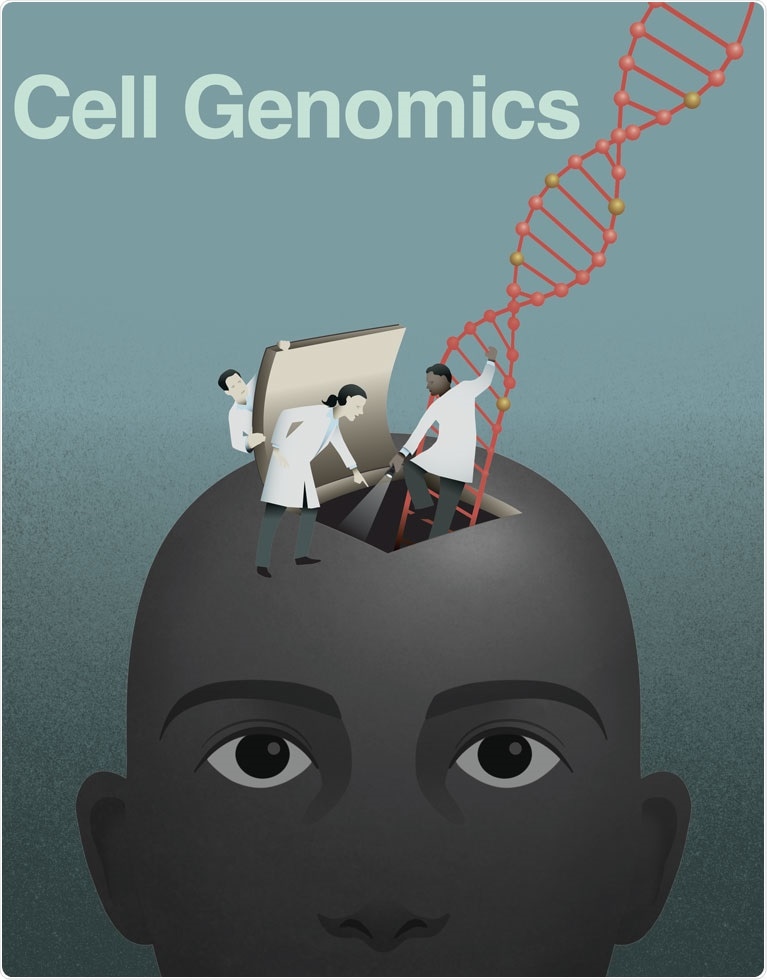Researchers at the Salk Institute have created a novel genomic technology that enables them to study DNA, RNA, and chromatin (a mixture of DNA and protein) from a single cell at the same time.

The cover image depicts a new technology that can help researchers understand the inner workings of the human brain. Image Credit: Cell Genomics, Salk Institute and Scot Nicholls.
The technique, which took five years to develop, is a significant step forward towards large collaborations in which various teams are working on the classification of thousands of new cell types at the same time. The technological innovation is published in Cell Genomics on March 9th, 2022, and will aid in the speeding up of analyzes.
Joseph Ecker, the director of the Genomic Analysis Laboratory at the Salk International Council Chair in Genetics and Howard Hughes Medical Institute Investigator says, “This multimodal platform is going to be useful by providing a comprehensive database that can be used by the groups trying to integrate their single-modality data. This new information can also inform and guide future cell-type classification.”
Ecker feels that this innovation will be critical for large-scale studies like the BRAIN Initiative Cell Census Network at the National Institutes of Health, which he chairs jointly. The BRAIN Initiative is working to create collections of mouse and human brain cell types. This knowledge can then be applied to help comprehend how the brain functions and grows, as well as the involvement of distinct cell types in neurodegenerative illnesses like Alzheimer’s.
Single-cell technology currently operates by extracting DNA, RNA, or chromatin from a cell’s nucleus and then looking for patterns in its molecular structure. However, since this procedure eliminates the cell, scientists must rely on computational tools to study many of these components per cell or analyze the outcomes.
Researchers employed biomarkers to tag DNA, RNA, and chromatin without extracting them from the cell for the novel method, named snmCAT-seq. The researchers were able to measure all three sorts of molecular data in the same cell as a result of this.
The researchers next utilized this approach to determine 63 cell types in the human brain's frontal cortex region, putting computational modeling for merging several single-cell technologies to the test.
The researchers discovered that while computational methods are accurate in describing broadly defined brain-cell populations, they are ambiguous in analyzing finely specified cell kinds, implying that cell types should be characterized using a variety of metrics for more accurate categorization.
It could also be used to learn more about how genes and cells collaborate to cause neurodegenerative illnesses.
These diseases can broadly affect many cell types. But there could be certain cell populations that are particularly vulnerable. Genetic research has pinpointed the regions of the genome that are relevant for diseases like Alzheimer's. We are providing another data dimension and identifying the cell types affected by these genomic regions.”
Chongyuan Luo, Study Co-First Author and Assistant Professor, Human Genetics, David Geffen School of Medicine, University of California
The team hopes to utilize the new technology to examine other sections of the brain and analyze cells from healthy human brains to cells from brains stricken by Alzheimer’s disease and other neurodegenerative disorders as a future step.
Source:
Journal reference:
Luo, C., et al. (2022) Single nucleus multi-omics identifies human cortical cell regulatory genome diversity. Cell Genomics. doi.org/10.1016/j.xgen.2022.100107.